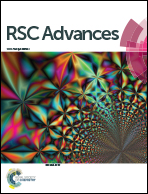Significantly enhanced mechanical and electrical properties of epoxy nanocomposites reinforced with low loading of polyaniline nanoparticles
Abstract
The polyaniline (PANI)/epoxy nanocomposites with enhanced mechanical and electrical properties were prepared by three different techniques. Fourier transform infrared (FT-IR) spectroscopy and scanning electron microscopy (SEM) were used to study the chemical structure and surface morphology of the PANI nanoparticles, which were synthesized by the oxidation polymerization method. The effects of PANI loading and preparation method on the mechanical and electrical properties of PANI/epoxy nanocomposites were comparatively studied. The SEM images of the PANI/epoxy nanocomposites after doing the tensile test were used to study the dispersion of PANI nanoparticles in the epoxy matrix. The tensile strength of 5.0 wt% PANI/epoxy nanocomposites (107.27 MPa) was much higher than that of our previous PANI/epoxy nanocomposites (about 60.0 MPa) with the same PANI loading. The volume resistivity of the PANI/epoxy nanocomposites was also decreased compared to the reported literature. The toughness and Young's modulus of the PANI/epoxy nanocomposites were also studied and presented in this paper.


 Please wait while we load your content...
Please wait while we load your content...